This 4K Ultra HD and Blu-ray combo disc is currently available from Blue Underground.
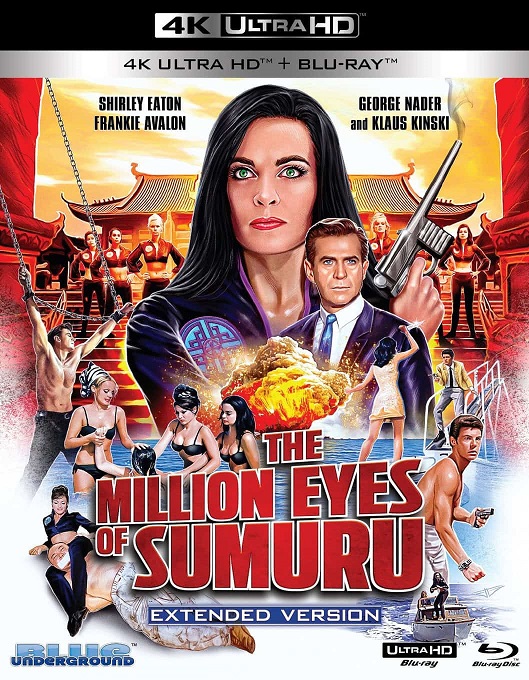
More than 100 years ago, British author Sax Rohmer created the sinister character of Fu Manchu, as well as femme fatale Sumuru (who appeared in later novels). Obviously, these pulpy works were a snapshot of their time period, but were popular into the 1960s. Naturally, the brand was successful enough that many adaptations of his characters were made for the big screen. Independent English producer Harry Alan Towers made a Fu Manchu picture or two, as well as the bonkers B-movie The Million Eyes of Sumuru, which takes a few aspects of the character and mixes them with James Bond adventure picture tropes popular at the time.
This week, Blue Underground is putting out a 4K restoration of the uncut version of the movie from the original camera negative. While this campy picture isn’t for all audiences, just about anyone who sees it has to admit that the quality of the presentation and the bonus features are nothing short of stellar.
Sumuru (Shirley Eaton) is a villainous woman with big plans for the world. Using her army of female agents, she plans on taking control of the planet by wiping out male leaders and replacing them with her own organization. She’s ruthless, calling for the deaths of various enemies, as well as those within her fold who fall in love with men. While visiting Asia, American secret agent Nick West (George Nader) and his young chum Tommy Carter (Frankie Avalon) are approached by British agency head Sir Anthony Baisbrook (Wilfrid Hyde-White). The pair is asked to help his government by investigating Sumuru and protecting the potential target of an assassination plot. The protagonists are soon framed for a murder they didn’t commit while trying to save the eccentric President Boong (Klaus Kinski) from being killed.
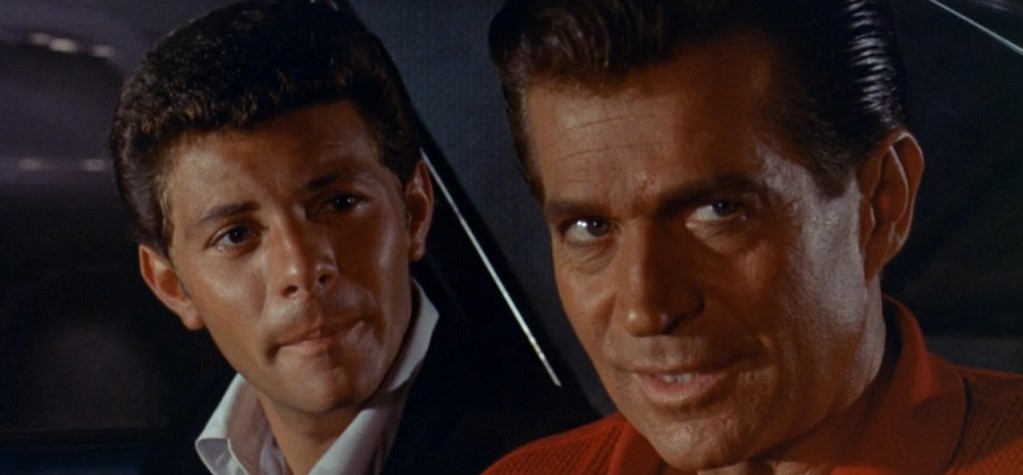
It’s all pure camp and silliness, with great attention paid to the uniformed ladies luring and murdering men. Slayings result in off-handed jokes from agents West and Carter as they get pulled deeper into the plot. Truthfully, they don’t seem to be very good at their jobs, quickly getting themselves in over their heads, surviving by luck as they adapt to situations in a breezy and uncaring manner.
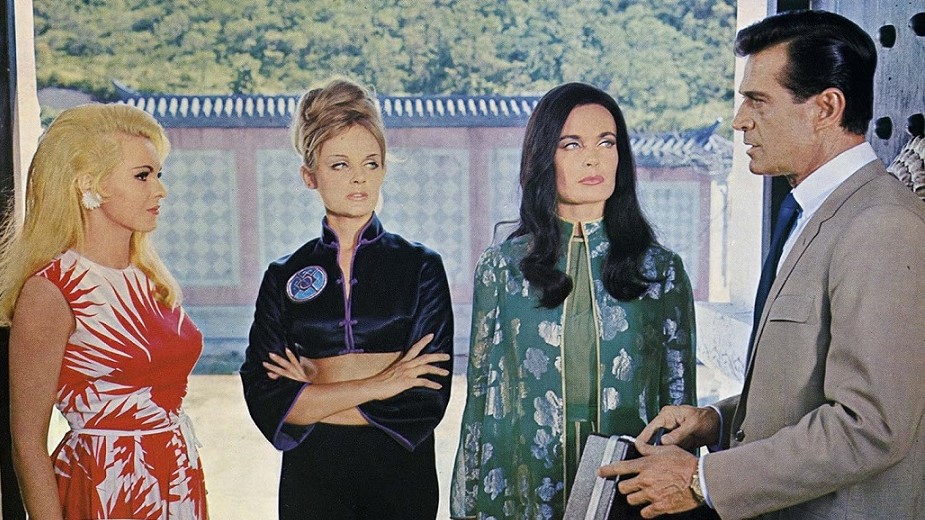
But while this low-budget affair can’t compete with the Bond series, it does have some positives. The Hong Kong locations are impressive. Bond-girl Eaton (who appeared in Goldfinger) is a striking villainess who does command attention, and there are some moments that make a lasting impression. The surreal Boong character is so strange that his main scene requires a rewatch. Kinski dons all sorts of odd get-ups in his limited role and earns the movie’s biggest laugh with his exaggerated use of a champagne bottle during a conversation with the leads.
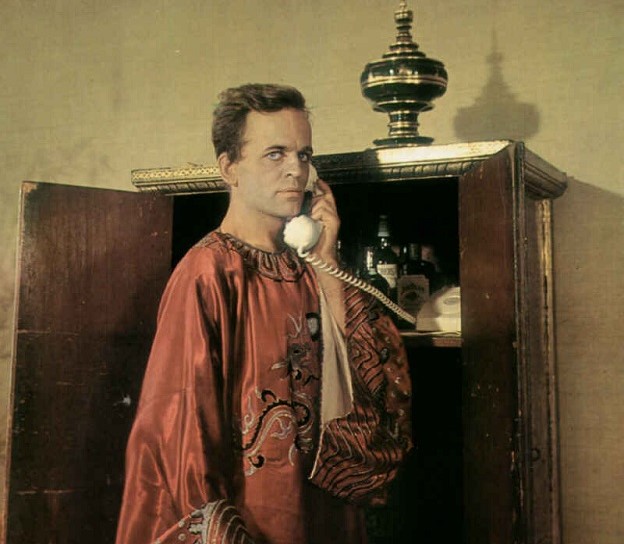
There are other odd reveals, including the fact that Carter is actually a British agent in disguise. It’s unfortunate that no one asked Avalon to put on an English accent at the end of the movie. Even if it were done terribly, this is a comedy and it would have garnered big laughs. Anyway, while the film is no classic and could have been even bolder than it is, it does provide chuckles and appears more impressive than other pictures in its price range.
The image quality is surprisingly strong. There is a tiny bit of natural film grain in some darker moments, but the location photography is spectacular and incredibly clean. This is definitely as good as this film can look. And the bonus features are some of the most enlightening I’ve seen in quite a while, adding remarkable details about the production and those involved in the film.
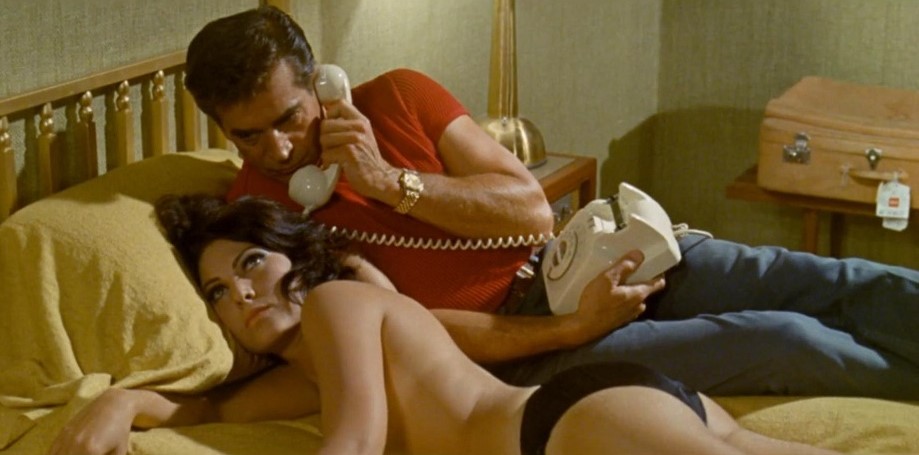
There are two informative film historian commentaries with a pair of experts that go into the production side of things. They are both entertaining and offer a lot of stories about the cast and crew. Due to the experiences of the speakers, one track goes into great detail on the career of producer Harry Alan Towers and his wife Maria Rohm (who plays one of Sumuru’s henchwomen). All of the factoids are interesting.
It is funny, though, that while both groups admit there are problems with the casting, they criticize different performers. All of them like the leads, but one pair thinks that Nader has a better presence and delivery, while the others insist that it’s Avalon who is saving the picture. Most of the members aren’t taken with Lindsay Shonteff, suggesting he needed more extreme humor and noting that something must have happened between him and Towers, who never worked together again.
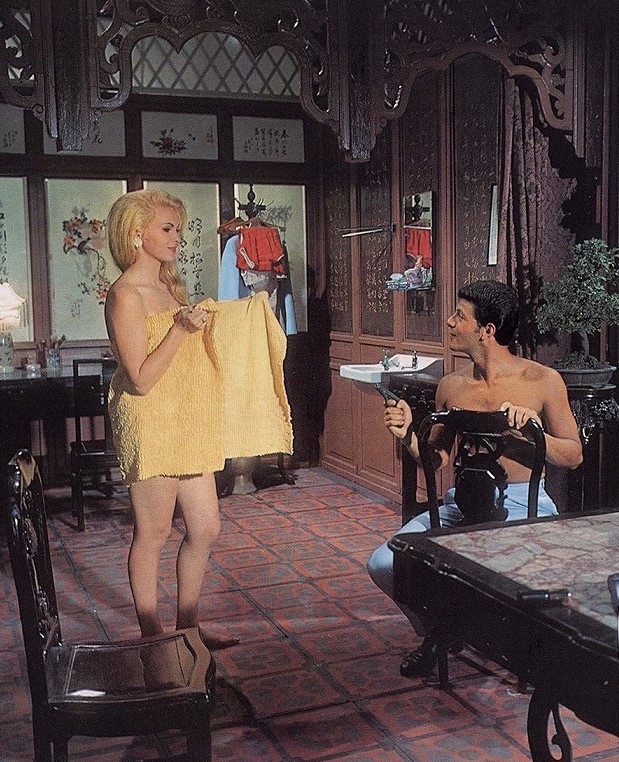
But a documentary on the disc called England’s Unknown Exploitation Film Eccentric: The Schlock-Cinema Legacy of Lindsay Shonteff is the real highlight of the extras and offers an incredible look at the man behind the camera. The documentaries talk with the filmmaker’s friends and various cast members about his interesting career, and it answers a lot of questions.
The first fascinating fact is that Shonteff is actually Canadian. The moviemaker was encouraged by the well-established fellow-Torontonian Sidney J. Furie (Doctor Blood’s Coffin, The Young Ones, The Ipcress File), who had found success in the UK. After turning down a genre picture called Devil Doll, Furie suggested Shonteff for the position. This helped establish the new moviemaker and led to work in low-budget films. Shonteff eventually found his calling with the Bond-esque spy comedy Licensed to Kill.
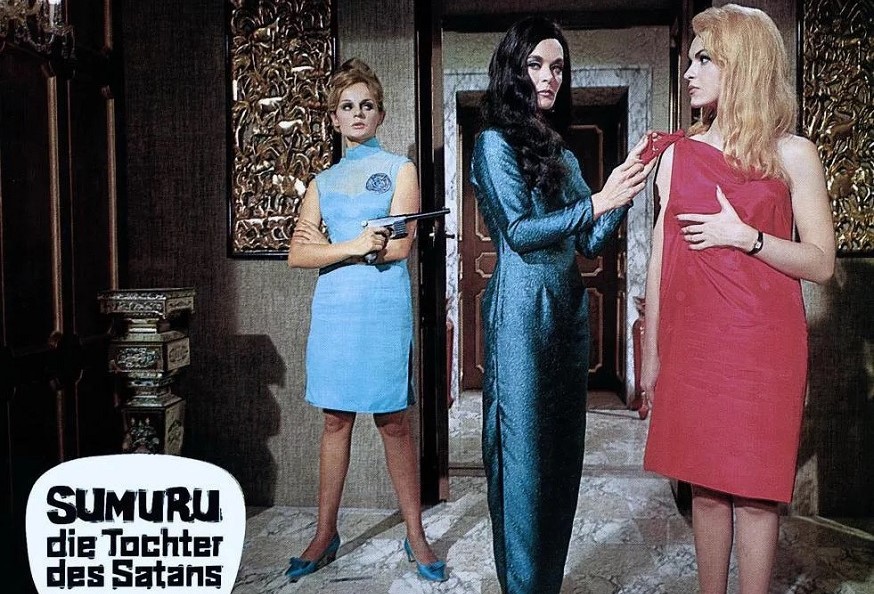
Apparently, the eccentric Shonteff did want outrageous humor in his movies, and The Million Eyes of Sumuru was no exception. Some of the participants note that he got on extremely well with the cast and crew, including the notoriously difficult Kinski. Apparently, much more wild and crazy humor was shot. It is said that in early cuts, the bizarre President character had a propensity to try and lick anyone around him. Sadly, the footage was removed. After production wrapped, Towers objected to the tone, taking control of the project and editing it into a more Bond-ike picture (this worked on a financial level, as the movie was a box office success).
Still, it might explain in part why Shonteff was reluctant to work with Towers again. And then, as other interviewees note, the director learned that he had been offered the 20th Century Fox Racquel Welch spy-comedy Fathom and that his agent turned the assignment down, accepting the smaller Sumuru project instead without his consultation.
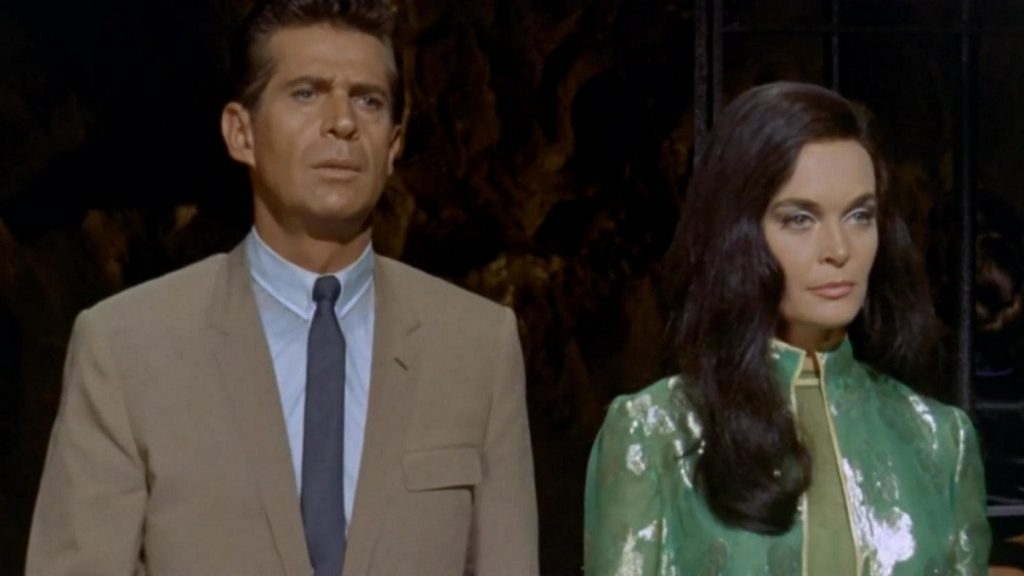
So, Shonteff terminated relations with his agent. He made the independent rock-groupie cult film Permissive (1970) and soon began producing his own over-the-top spy-comedy pictures, including Big Zapper and The Swordsman, which were aggrandized tales noted for featuring a female Bond-like protagonist doing battle with evil forces. He continued making these comedies throughout the decade. They were profitable in the UK and international territories, but didn’t get significant releases in North America.
All involved, including the star of Big Zipper and The Swordsman, speak well of him and his tendency to shoot guerrilla-style in order to get more bang for his buck. Additionally, they note how Permissive has been re-evaluated in recent years and that the British Film Institute has been searching for a high-quality copy for restoration purposes but have yet to find one. Since the late Shonteff is the owner of many of his pictures, he might have been in control of source material, but no one can locate anything. This is just the tip of the iceberg. The documentary is fascinating and also makes one hope that some of these crazy pictures can be rescued.
Also included is a very funny Rifftrax version of the movie. It definitely pokes fun at the movie, but isn’t mean-spirited in its attacks and makes for another fun extra. Finally, a theatrical trailer, poster and still gallery is also included.
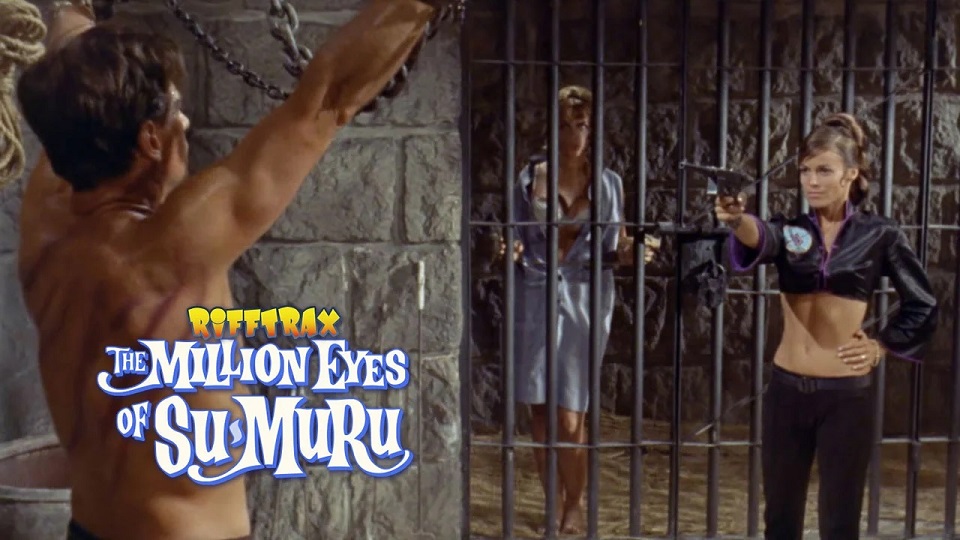
The Million Eyes of Sumuru isn’t a classic, but it does deliver campy entertainment. And the 4K Ultra HD and Blu-ray set definitely treats the movie like it’s Citizen Kane, with brilliant picture equality and hours of incredible bonus material. It’s a phenomenal disc and comes highly recommended to anyone who loves 60s cinema and/or the numerous James Bond knockoffs that were prevalent during this period.


